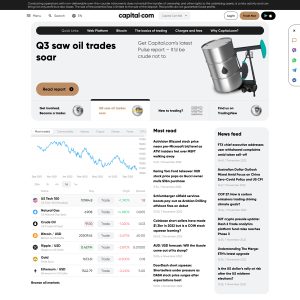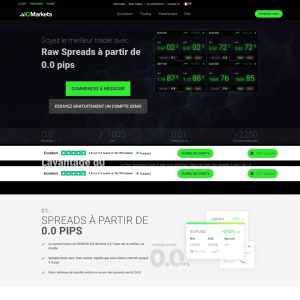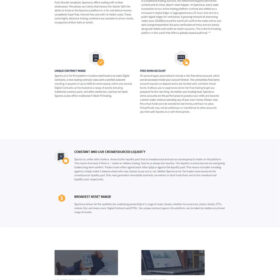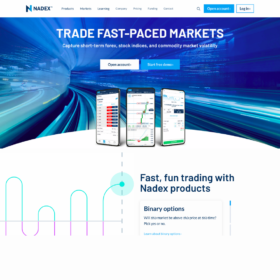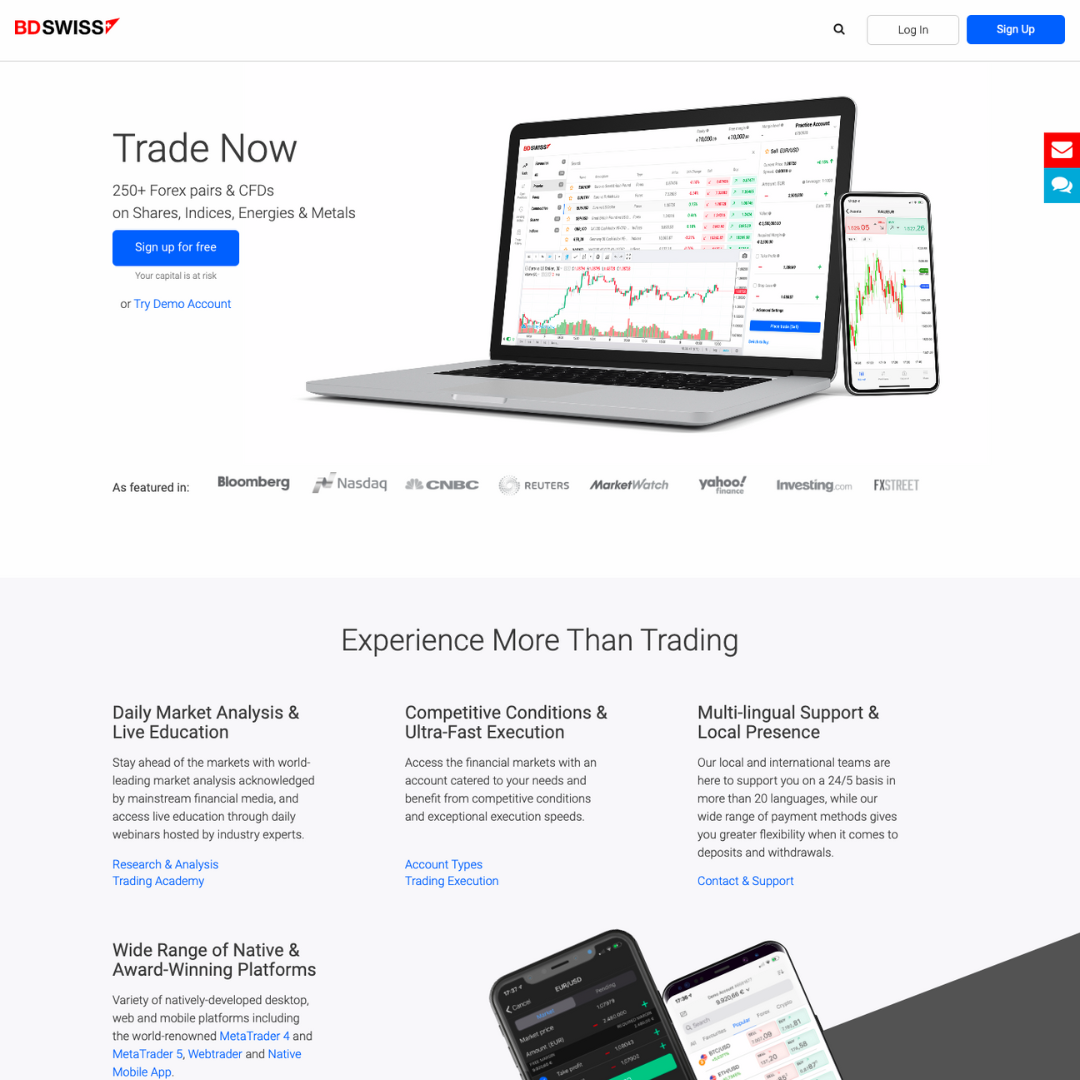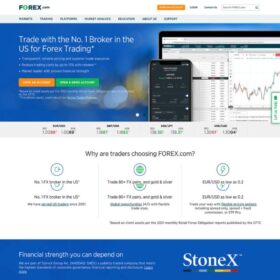
CFD Brokers
Contract for Differences (CFDs) Overview & Examples.
A contract for difference (CFD) is a contract between a buyer and a seller that stipulates that the buyer must pay the seller. The difference between the current value of an asset and its value at contract time. CFDs allow traders and investors an opportunity to profit from price movement without owning the underlying assets. The value of a CFD contract does not consider the asset’s underlying value: only the price change between the trade entry and exit.
This is accomplished through a contract between client and broker and does not utilize any stock, forex, commodity, or futures exchange. Trading CFDs offers several major advantages that have increased the instruments’ enormous popularity in the past decade.
KEY TAKEAWAYS
A contract for differences (CFD) is an agreement between an investor and a CFD broker to exchange the difference in the value of a financial product between the time the contract opens and closes.
A CFD investor never actually owns the underlying asset but instead receives revenue based on the price change of that asset.
Some advantages of CFDs include access to the underlying asset at a lower cost than buying the asset outright, ease of execution, and the ability to go long or short.
A disadvantage of CFDs is the immediate decrease of the investor’s initial position, which is reduced by the size of the spread upon entering the CFD.
Other CFD risks include weak industry regulation, potential lack of liquidity, and the need to maintain an adequate margin.
Contract for Differences (CFD)
How CFDs Work
A contract for differences (CFD) is an agreement between an investor and a CFD broker to exchange. The difference in the value of a financial product (securities or derivatives) between the time the contract opens and closes.
It is an advanced trading strategy that is utilized by experienced traders only. There is no delivery of physical goods or securities with CFDs. A CFD investor never actually owns the underlying asset. But instead receives revenue based on the price change of that asset. For example, instead of buying or selling physical gold, a trader can simply speculate on whether the price of gold will go up or down.
Essentially, investors can use CFDs to make bets about whether or not the price of the underlying asset or security will rise or fall. Traders can bet on either upward or downward movement. If the trader that has purchased a CFD sees the asset’s price increase, they will offer their holding for sale. The net difference between the purchase price and the sale price are netted together. The net difference representing the gain from the trades is settled through the investor’s brokerage account.
On the other hand, if the trader believes that the asset’s value will decline, an opening sell position can be placed. In order to close the position, the trader must purchase an offsetting trade. Then, the net difference of the loss is cash-settled through their account.
Countries Where You Can Trade CFDs
CFD contracts are not allowed in the U.S. They are allowed in listed, over-the-counter (OTC) markets in many major trading countries, including the United Kingdom, Germany, Switzerland, Singapore, Spain, France, South Africa, Canada, New Zealand, Hong Kong, Sweden, Norway, Italy, Thailand, Belgium, Denmark, and the Netherlands.1
As for Australia, where CFD contracts are currently allowed. The Australian Securities and Investment Commission (ASIC) has announced some changes in the issue and distribution of CFDs to retail clients. ASIC’s goal is to strengthen consumer protections by reducing CFD leverage available to retail clients. And by targeting CFD product features and sales practices that amplify retail clients’ CFD losses. ASIC’s product intervention order took effect on March 29, 2021.2
The U.S. Securities and Exchange Commission (SEC) has restricted the trading of CFDs in the U.S., but non-residents can trade using them.3
Fast Fact
CFD trading is surging in 2020. A key feature of CFDs is that they allow you to trade on markets that are heading downwards. In addition to those that are heading up—allowing them to deliver profit even when the market is in turmoil.
Practice trading with virtual money
The costs of trading CFDs include a commission (in some cases), a financing cost (in certain situations). And the spread—the difference between the bid price (purchase price) and the offer price at the time you trade.
There is usually no commission for trading forex pairs and commodities. However, brokers typically charge a commission for stocks. For example, the broker CMC Markets, a U.K.-based financial services company, charges commissions that start from .10%, or $0.02 per share for U.S. and Canadian-listed shares. The opening and closing trades constitute two separate trades, and thus you are charged a commission for each trade.
Find out what a hypothetical investment would be worth today.
A financing charge may apply if you take a long position. This is because overnight positions for a product are considered an investment (and the provider has lent the trader money to buy the asset). Traders are usually charged an interest charge on each of the days they hold the position.
For example, suppose that a trader wants to buy CFDs for the share price of GlaxoSmithKline. The trader places a £10,000 trade. The current price of GlaxoSmithKline is £23.50. The trader expects that the share price will increase to £24.80 per share. The bid-offer spread is 24.80-23.50.
The trader will pay a 0.1% commission on opening the position and another 0.1% when the position is closed. For a long position, the trader will be charged a financing charge overnight (normally the LIBOR interest rate plus 2.5%).
The trader buys 426 contracts at £23.50 per share, so their trading position is £10,011. Suppose that the share price of GlaxoSmithKline increases to £24.80 in 16 days. The initial value of the trade is £10,011 but the final value is £10,564.80.
The trader’s profit (before charges and commission) is as follows:
£10,564.80 – £10,011= £553.80
Since the commission is 0.1%, upon opening the position the trader pays £10. Suppose that interest charges are 7.5%, which must be paid on each of the 16 days that the trader holds the position. (426 x £23.50 x 0.075/365 = £2.06. Since the position is open for 16 days, the total charge is 16 x £2.06 = £32.89.)
When the position is closed, the trader must pay another 0.01% commission fee of £10.
The trader’s net profit is equal to profits minus charges:
553.80 (profit) – 10 (commission) – 32.89 (interest) – 10 (commission)= £500.91 (net profit)
Advantages of CFDs
Higher Leverage
CFDs provide higher leverage than traditional trading. Standard leverage in the CFD market is subject to regulation. It once was as low as a 2% maintenance margin (50:1 leverage), but is now limited in a range of 3% (30:1 leverage) and could go up to 50% (2:1 leverage). Lower margin requirements mean less capital outlay for the trader and greater potential returns. However, increased leverage can also magnify a trader’s losses.
Global Market Access From One Platform
Many CFD brokers offer products in all the world’s major markets, allowing around-the-clock access. Investors can trade CFDs on a wide range of worldwide markets.
No Shorting Rules or Borrowing Stock
Certain markets have rules that prohibit shorting, require the trader to borrow the instrument before selling short. Or have different margin requirements for short and long positions. CFD instruments can be shorted at any time without borrowing costs because the trader doesn’t own the underlying asset.
Professional Execution With No Fees
CFD brokers offer many of the same order types as traditional brokers including stops, limits, and contingent orders. Such as “one cancels the other” and “if done.” Some brokers offering guaranteed stops will charge a fee for the service or recoup costs in another way.
Brokers make money when the trader pays the spread. Occasionally, they charge commissions or fees. To buy, a trader must pay the ask price, and to sell or short, the trader must pay the bid price. This spread may be small or large depending on the volatility of the underlying asset; fixed spreads are often available.
No Day Trading Requirements
Certain markets require minimum amounts of capital to day trade or place limits on the number of day trades that can be made within certain accounts. The CFD market is not bound by these restrictions, and all account holders can day trade if they wish. Accounts can often be opened for as little as $1,000, although $2,000 and $5,000 are common minimum deposit requirements.
Variety of Trading Opportunities
Brokers currently offer stock, index, treasury, currency, sector, and commodity CFDs. This enables speculators interested in diverse financial vehicles to trade CFDs as an alternative to exchanges.
Disadvantages of CFDs
Traders Pay the Spread
While CFDs offer an attractive alternative to traditional markets, they also present potential pitfalls. For one, having to pay the spread on entries and exits eliminates the potential to profit from small moves. The spread also decreases winning trades by a small amount compared to the underlying security and will increase losses by a small amount. So, while traditional markets expose the trader to fees, regulations, commissions, and higher capital requirements, CFDs trim traders’ profits through spread costs.
Weak Industry Regulation
The CFD industry is not highly regulated. A CFD broker’s credibility is based on reputation, longevity, and financial position rather than government standing or liquidity. There are excellent CFD brokers, but it’s important to investigate a broker’s background before opening an account.
Risks
CFD trading is fast-moving and requires close monitoring. As a result, traders should be aware of the significant risks when trading CFDs. There are liquidity risks and margins you need to maintain; if you cannot cover reductions in values, your provider may close your position, and you’ll have to meet the loss no matter what subsequently happens to the underlying asset.
Leverage risks expose you to greater potential profits but also greater potential losses. While stop-loss limits are available from many CFD providers, they can’t guarantee you won’t suffer losses, especially if there’s a market closure or a sharp price movement. Execution risks also may occur due to lags in trades.
Because the industry is not regulated and there are significant risks involved, CFDs are banned in the U.S. by the Securities and Exchange Commission (SEC).3
Example of a CFD Trade
Suppose that a stock has an ask price of $25.26 and the trader buys 100 shares. The cost of the transaction is $2,526 (plus any commission and fees). This trade requires at least $1,263 in free cash at a traditional broker in a 50% margin account, while a CFD broker requires just a 5% margin, or $126.30.
A CFD trade will show a loss equal to the size of the spread at the time of the transaction. If the spread is $0.05 cents, the stock needs to gain $0.05 cents for the position to hit the break-even price. While you’ll see a $0.05 gain if you owned the stock outright, you would have also paid a commission and incurred a larger capital outlay.
If the stock rallies to a bid price of $25.76 in a traditional broker account, it can be sold for a $50 gain or $50 / $1,263 = 3.95% profit. However, when the national exchange reaches this price, the CFD bid price may only be $25.74. The CFD profit will be lower because the trader must exit at the bid price and the spread is larger than on the regular market.
In this example, the CFD trader earns an estimated $48 or $48 / $126.30 = 38% return on investment. The CFD broker may also require the trader to buy at a higher initial price, $25.28 for example. Even so, the $46 to $48 earned on the CFD trade denotes a net profit, while the $50 profit from owning the stock outright doesn’t include commissions or other fees. Thus, the CFD trader ends up with more money in their pocket.
What Are CFDs?
Contracts for differences (CFDs) are contracts between investors and financial institutions in which investors take a position on the future value of an asset. The difference between the open and closing trade prices are cash-settled. There is no physical delivery of goods or securities; a client and the broker exchange the difference in the initial price of the trade and its value when the trade is unwound or reversed.
How Do CFDs Work?
A contract for difference (CFD) allows traders to speculate on the future market movements of an underlying asset, without actually owning or taking physical delivery of the underlying asset. CFDs are available for a range of underlying assets, such as shares, commodities, and foreign exchange. A CFD involves two trades. The first trade creates the open position, which is later closed out through a reverse trade with the CFD provider at a different price.
If the first trade is a buy or long position, the second trade (which closes the open position) is a sell. If the opening trade was a sell or short position, the closing trade is a buy.
The net profit of the trader is the price difference between the opening trade and the closing-out trade (less any commission or interest).
Why Are CFDs Illegal in the US?
Part of the reason that CFDs are illegal in the U.S. is that they are an over-the-counter (OTC) product, which means that they don’t pass through regulated exchanges. Using leverage also allows for the possibility of larger losses and is a concern for regulators.
The Commodity Futures Trading Commission (CFTC) and the Securities and Exchange Commission (SEC) prohibit residents and citizens of the U.S. from opening CFD accounts on domestic or foreign platforms.3
Is Trading CFDs Safe?
Trading CFDs can be risky, and the potential advantages of them can sometimes overshadow the associated counterparty risk, market risk, client money risk, and liquidity risk. CFD trading can also be considered risky as a result of other factors, including poor industry regulation, potential lack of liquidity, and the need to maintain an adequate margin due to leveraged losses.
Can You Make Money With CFDs?
Yes, of course, it is possible to make money trading CFDs. However, trading CFDs is a risky strategy relative to other forms of trading. Most successful CFD traders are veteran traders with a wealth of experience and tactical acumen.
Showing all 2 results

